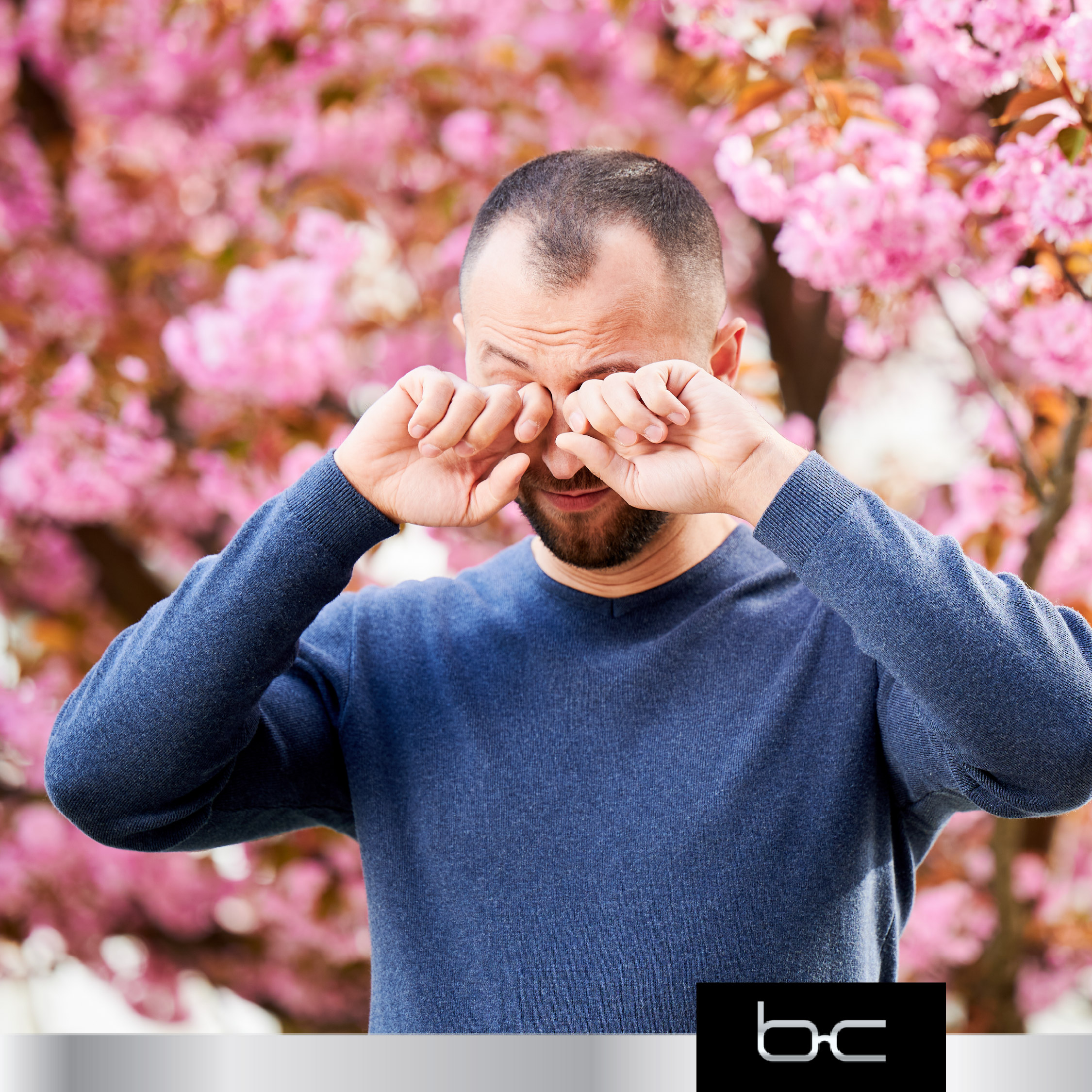Ah, springtime. While most of us welcome the transition from the chill of winter to the warmth of spring, it’s also a prime setting for common eye allergies.
If you’re among them, you’re not alone—and there are several strategies that may help provide relief. Below are some common eye allergies and tips that could help keep your eyes irritation-free:
Common Eye Allergies
Seasonal Allergic Conjunctivitis
Seasonal Allergic Conjunctivitis is the most common type of eye allergy. It primarily occurs seasonally, often coinciding with higher levels of pollen in the air from trees, grasses, and weeds. This exposure may lead to symptoms such as itchy, watery, red eyes, as well as swelling or puffiness. Some people may also notice a yellow-white eye discharge or an itchy, runny nose.
Tips to mitigate: Try to limit outdoor activity when pollen counts are high. Indoor air purifiers and keeping windows closed may also reduce the chance of exposure. After being outside, showering and changing clothes may help lessen the amount of pollen brought into your home. Over-the-counter treatments like artificial tears, antihistamines, and eye drops may offer relief, as can regularly flushing out your eyes with water.
Perennial Allergic Conjunctivitis
Unlike Seasonal Allergic Conjunctivitis, Perennial Allergic Conjunctivitis occurs year-round, often triggered by indoor allergens such as dust mites, mold, and pet dander. The symptoms are similar to SAC, but can appear regardless of the season.
Tips to mitigate: Identifying specific triggers of symptoms is a good first step. For example, you may have an allergy response when you are around pets. Vacuuming regularly using a HEPA filter and frequently washing bedding in hot water may help reduce allergens. If you have pets, keep them out of the bedroom and off of furniture.
Contact Allergic Conjunctivitis
A type of allergy specific to contact wearers, contact allergic conjunctivitis, occurs when eyes react negatively to contact lenses or their cleaning solutions. In addition to general irritation and other similar symptoms suffered by those who have SAC/PAC, contact allergic conjunctivitis sufferers can feel discomfort from their lenses. Blurry vision can also be a symptom.
Tips to mitigate: Extended wear of contacts—such as monthly lenses—may increase the likelihood of irritation. Discuss options such as switching to daily disposable lenses with your eye doctor. Using preservative-free solutions may also help reduce reactions. Taking occasional breaks from contact lenses by switching to glasses can give your eyes a chance to rest.
Giant Papillary Conjunctivitis (GPC)
Giant Papillary Conjunctivitis occurs when the inner surface of the eyelid becomes irritated, red, and swollen, forming large bumps under the eyelid. The condition is often associated with contact lens use, but can also result from other irritants such as prosthetic eyes or surgical sutures. People with allergies such as asthma or hay fever may be more prone to developing GPC.
Tips to mitigate: Limit the amount of time you wear contacts each day and practice good contact hygiene habits. Avoiding sleeping in contacts and using preservative-free solutions are good examples of this. Consider giving your eyes a break from contacts by not wearing them from time to time and/or opting for a pair of glasses instead.
Keratoconjunctivtis Sicca
Also known as Dry Eye Syndrome, this condition occurs when eyes don’t produce enough tears and/or tears evaporate too quickly. Symptoms can include stinging or burning sensations, a gritty or scratchy feeling, blurred vision and/or red eyes. Potential risk factors include age, gender and geographic location, such as exposure to dry, low-humidity environments.
Tips to mitigate: Avoid environmental triggers; it may help to wear glasses or sunglasses outdoors on dry days. When indoors, consider using a humidifier in rooms you use frequently. Talk to your provider about a potential treatment that’s right for you, such as over-the-counter artificial tears, medicated eye drops and/or ointments.
Finding Relief
At Bauer & Clausen Optometry, our doctors are experienced in helping patients identify the cause of eye irritation and determining the proper treatment protocol.
Schedule an exam with one of our friendly eye care professionals today.






